Case Analysis of XRF Testing: Non destructive and Convenient, RoHS Compliance Assistant
Date:2024-03-20 13:51:00 Views:2662
Today, electronic technology profoundly defines our lives, and both the production and waste of electronic products worldwide are continuously increasing, leading to increasingly prominent environmental and health issues. The severity of this problem has been recognized globally, and mandatory standards have been established to limit the content of various harmful substances in electronic products.
Taking the RoHS standard launched by the European Union as an example, its purpose is to eliminate six pollutants in electronic products, including lead, mercury, cadmium, hexavalent chromium, polybrominated biphenyls, and polybrominated diphenyl ethers. As a manufacturer, if a product is to be exported to the European Union, it must have RoHS certification, otherwise it will not have access qualifications. Integrated circuits (ICs) are the core component of electronic products, and it is crucial to confirm whether they meet environmental standards from this source. The demand for related testing is also increasing.
XRF detection, as a non-destructive, fast, and environmentally friendly component detection method, has been widely used in the detection of pollutants designated by RoHS in the field of integrated circuits. In response to the rapid expansion demand, Chuangxin Testing purchased equipment, formed a team, and introduced industry standards and methods to establish an XRF testing project in 2021. Next, we will start with principles and examples to interpret XRF detection for you.
1. The basic detection principle of XRF:
XRF detection, also known as X-ray fluorescence analysis, is a method of component detection based on the interaction between X-rays and substances. When X-rays are irradiated on the surface of a substance, the inner electrons of atoms in the substance are excited to form holes, and the outer electrons transition to fill these holes, releasing characteristic X-rays. The energy and intensity of these characteristic X-rays are closely related to the elemental composition and content of the substance being measured. By measuring the energy and intensity of characteristic X-rays, the elemental composition and content of the measured substance can be accurately determined.
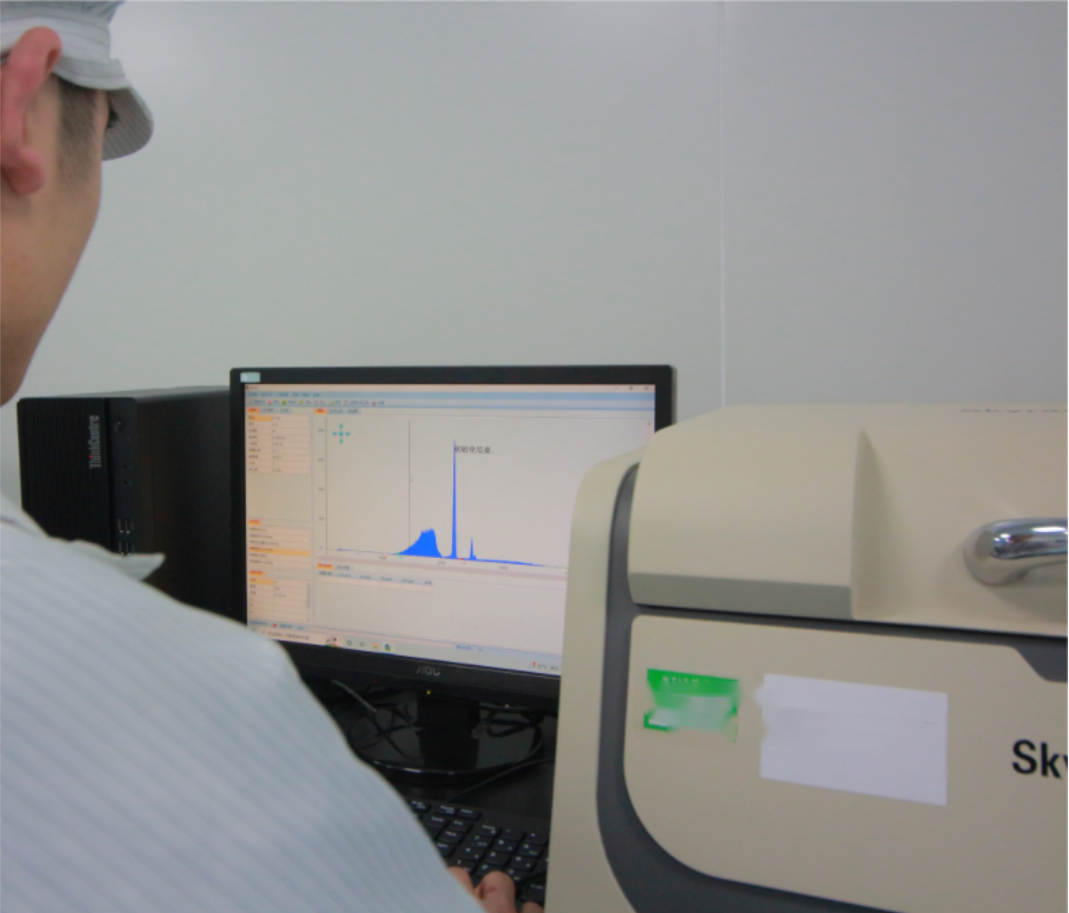
2. Application in integrated circuits:
XRF detection can cover all elements in the periodic table. In the detection of electronic products such as integrated circuits, it is mainly used to detect harmful element components in metal interconnects, solder joints, and packaging materials. The information on these element components is necessary to evaluate whether the product meets environmental standards such as RoHS.
The limit values for various pollutants specified by RoHS are 1000ppm (parts per million) for hexavalent chromium, 100ppm for cadmium, 1000ppm for mercury, 1000ppm for lead, 1000ppm for total polybrominated biphenyls, and 1000ppm for total polybrominated biphenyl ethers. Actual testing is based on the above standards to determine whether the sample has passed.
For devices with different packaging, the specific scanning positions are also specified, as shown in the following figure:
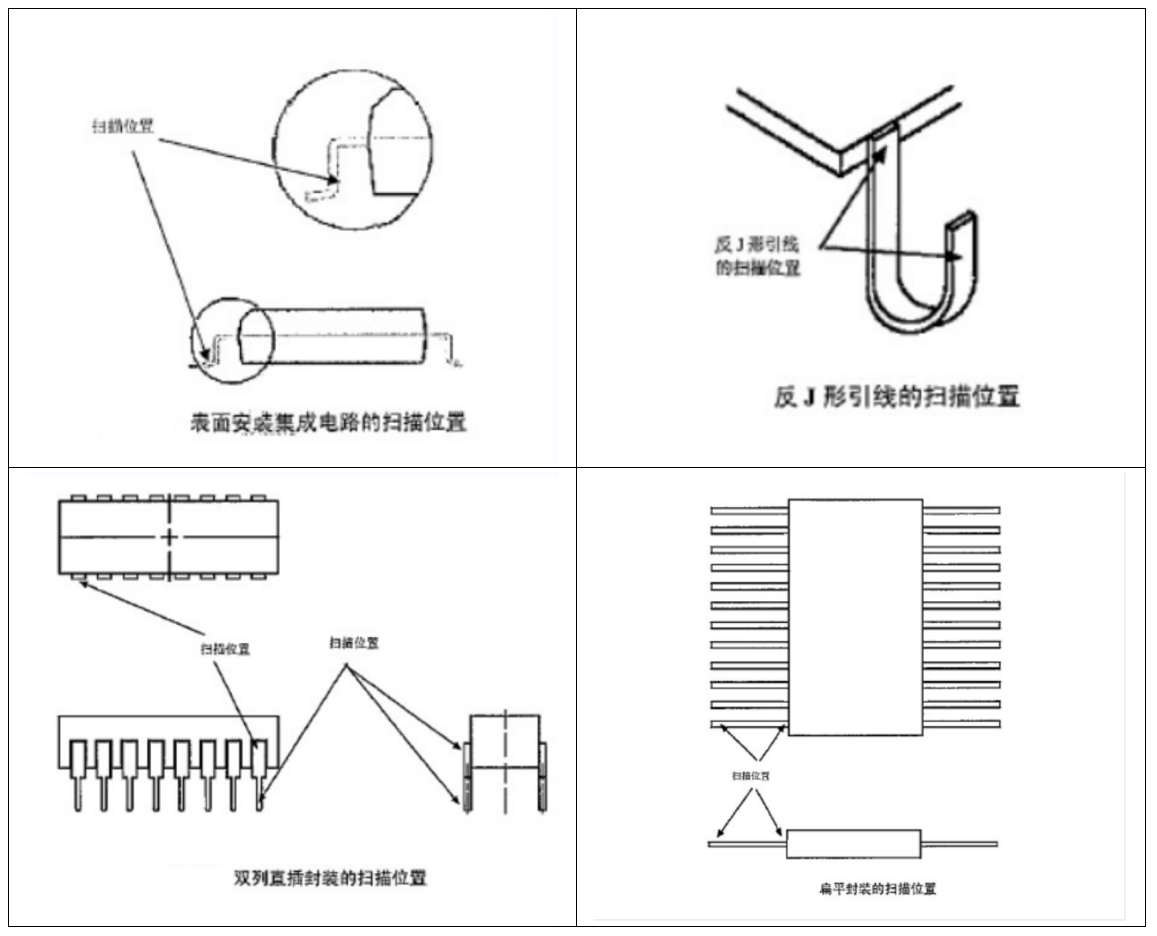
3. XRF detection has many advantages:
1. It belongs to non-destructive testing technology and does not require sample destruction for testing.
2. Fast and efficient, usually completing the detection of all the tested elements within a few minutes.
3. Low cost, suitable for batch inspection.
4. The sample preparation requirements are simple, and solid, powder, liquid samples, etc. can all be analyzed.
5. With comprehensive non-destructive and fast characteristics, XRF testing has significant environmental advantages.
4. Identification of interference factors in detection results:
It should be noted that in the XRF detection process, if the X-ray energy of two elements is similar, it may cause overlapping interference in the spectrum, which requires engineers to accurately interpret the interference spectrum.
We list three typical interference patterns in integrated circuit detection. These interferences may occur during the detection of specific material samples. It is important to eliminate the interference between these elements to ensure the accuracy and reliability of the detection results.
(1) The interference peak generated by gold (Au) and its impact on cadmium (Cd) are shown in the following figure:

(2) The impact of the superimposed peak generated by lead (Pb) on cadmium (Cd) is shown in the following figure:
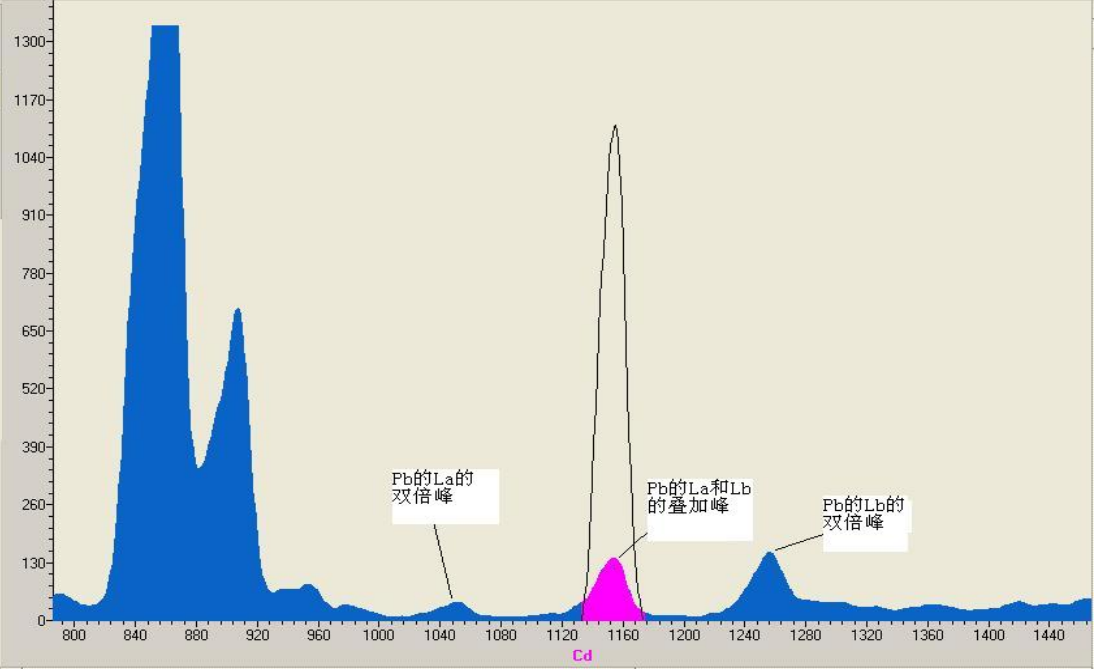
(3) The double peak produced by bromine (Br) and its impact on cadmium (Cd) are shown in the following figure:
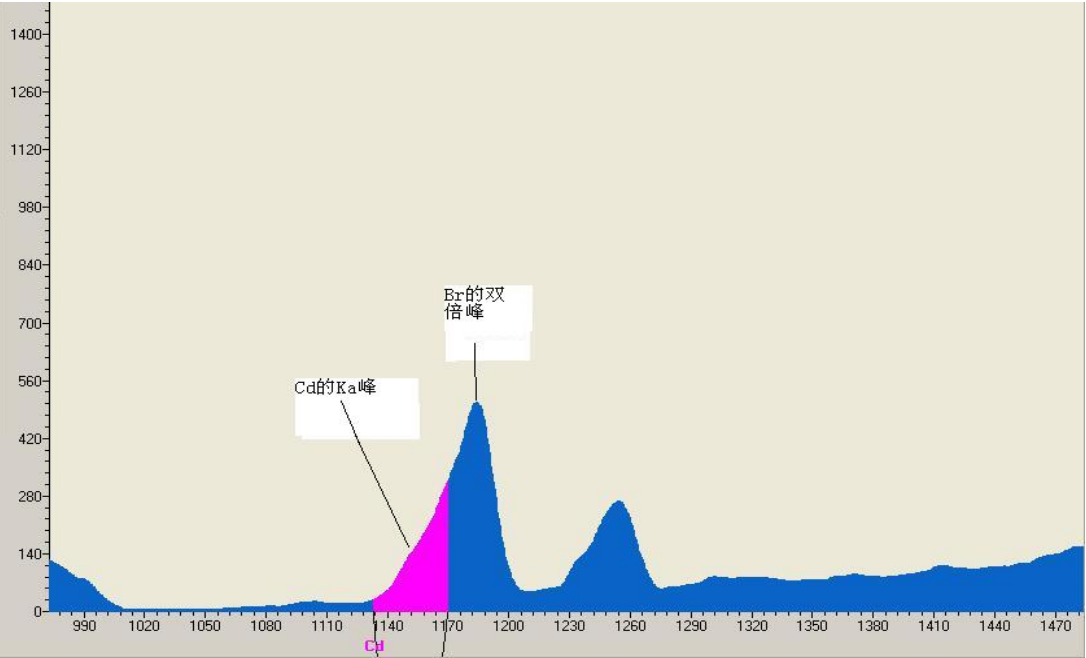
5. Case sharing (1)
According to customer specifications, the four harmful substance elements of cadmium, lead, mercury, and total chromium were tested, and the test results met the RoHS limit requirements.
From the detection results, it can be seen that the detection content of total chromium, cadmium, and mercury is lower than the lower limit of the instrument's detectable value (ND), indicating extremely low content; The detection value of mercury is 29.04 ppm, which is lower than the standard value of 1000 ppm. Based on the comprehensive detection of four substances, a passing judgment will be given.
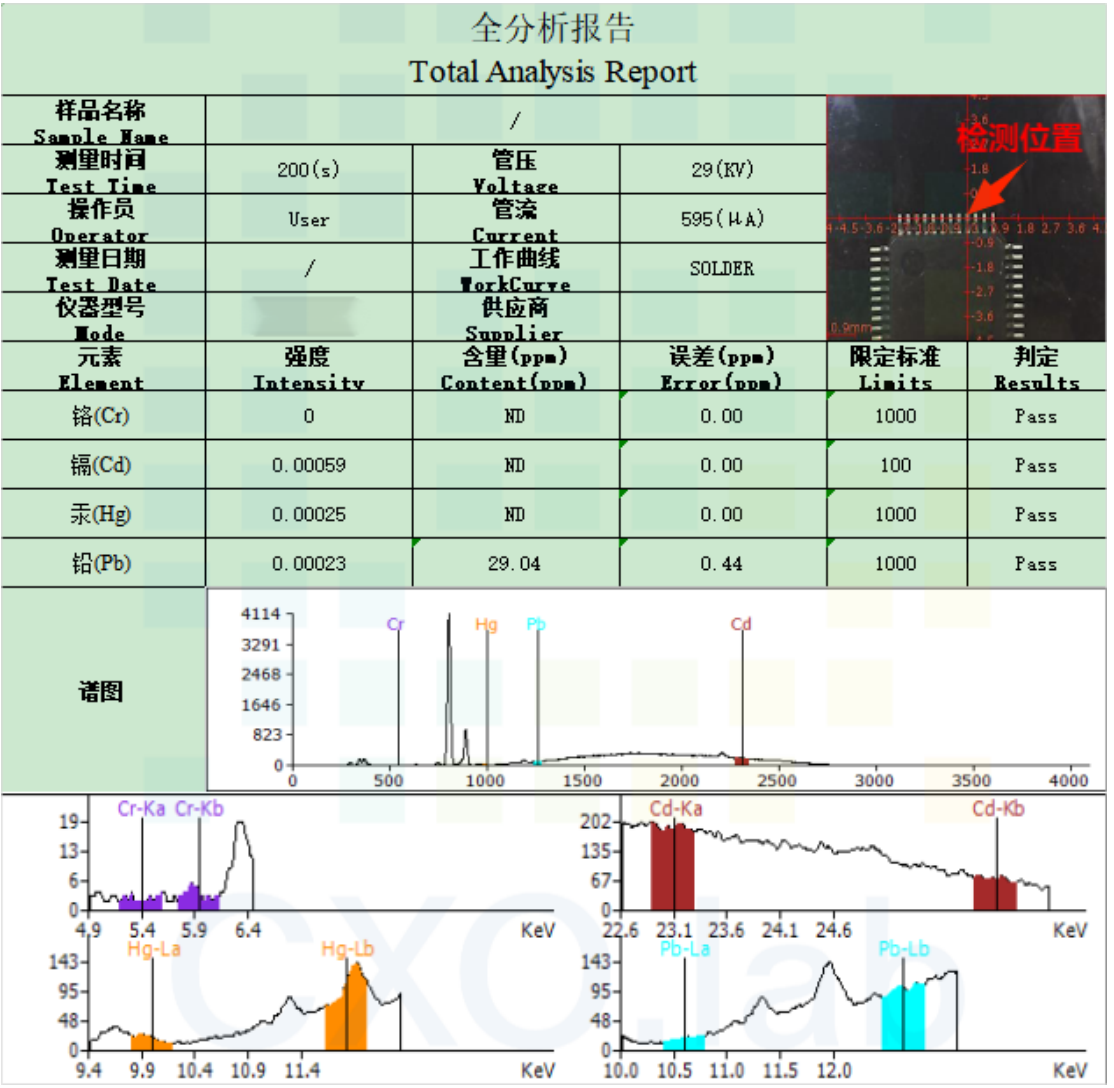
Case Sharing (2)
According to customer specifications, the four harmful substance elements of cadmium, lead, mercury, and total chromium were tested, and the test results met the RoHS limit requirements. The sample test passed. The specific indicator interpretation can refer to the above example, and it is also judged as passed.

With the increasingly stringent environmental requirements worldwide, the demand for XRF detection of harmful substances in integrated circuits is also increasing. Chuangxin Testing now has CNAS and CMA qualifications, which can ensure the professionalism of the testing process and the accuracy of the results. The reports produced have legal validity. If you have any requirements for integrated circuit testing, please call Chuangxin Testing, and we will be happy to serve you. Service phone number: 4008-655-800.




 Weixin Service
Weixin Service

 DouYin
DouYin
 KuaiShou
KuaiShou





















